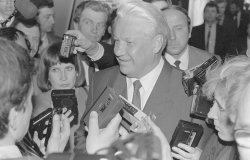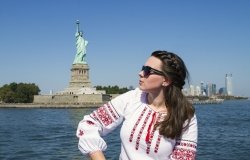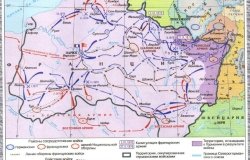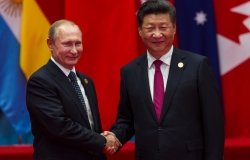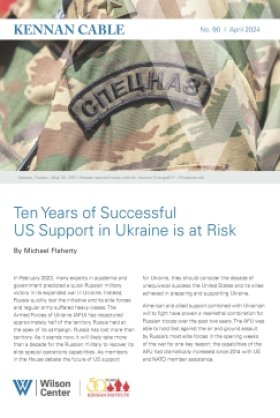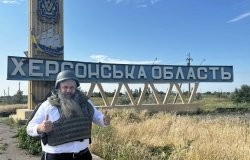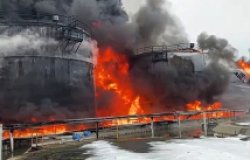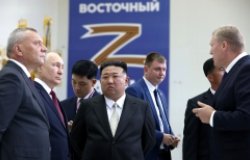Surzhyk: The Sociopolitical Significance of Ukrainian-Russian Mixed Language
Overview
In a meeting at the Kennan Institute, Laada Bilaniuk, Assistant Professor of Anthropology at the University of Washington explained that mixed languages exist in various forms throughout the world, and linguists use a number of factors to categorize mixed languages. Bilaniuk focused on the various forms of surzhyk, the mixed language found in Ukraine, and noted that some political leaders are attempting to restrict its use.
According to Bilaniuk, more research is necessary to determine the extent and regularity of use of surzhyk. She explained that the word itself originally had the negative meaning of mixing wheat and rye flour, and in the past has been associated with the lower class. The term surzhyk has retained its negative connotations and people are therefore hesitant to admit that they speak it. Bilaniuk noted that in a 1995 survey, less than 1 percent identified surzhyk or mixed language as their native language. However, when asked about their home language, 12 percent of those surveyed reported that they use mixed language and 16 percent that they alternated between Russian and Ukrainian.
Bilaniuk presented a typology of five main categories of Surzhyk found in Ukraine today. The first type she defined is urbanized peasant surzhyk, which can be attributed to Ukrainian peasants moving to the cities to find work and desiring to speak the more prestigious Russian language. The second type is village dialect surzhyk, where the local dialect had features of both Ukrainian and Russian languages prior to standardization, and was further influenced by contact with Russian administrators. She stated that examples of this are predominantly found in northeastern and eastern Ukraine, and include President Kuchma's native region. Bilaniuk referred to the third type of surzhyk as Sovietized Ukrainian surzhyk, and stated that this form of mixed language came about as a result of the Stalinist policies of the 1930s, during which any Ukrainian word that seemed nationalist fell under censorship ban, to be replaced by a word more similar to Russian. Bilinguals who speak both Ukrainian and Russian commonly use the fourth type , which she calls mixed language surzhyk, when they frequently flip back and forth between the two languages in conversation and borrow words from one into the other. Finally, she labels the fifth category post-independence surzhyk. According to Bilaniuk, this type came about after the elevation of Ukrainian as the official state language. She explained that this form is usually associated with native Russian speakers who substitute Russian words and phrases because they do not have language background in Ukrainian.
Bilaniuk described the powerful connection in Ukraine between political legitimacy and language, where purity of language is often a factor in judging a politician's authority and merits. She pointed out that President Kuchma uses Ukrainian whenever he addresses the public, but tapes allegedly recording his private conversations reveal that he often speaks a form of surzhyk. She explained that the use of surzhyk became a political issue in 1997, when a proposed language bill surfaced in the Ukrainian parliament, banning the usage of any nonstandard form of Ukrainian. She noted that although the bill did not pass, it illustrates purists' efforts to regulate not only language choice, but also how well one speaks Ukrainian.
Hosted By

Kennan Institute
The Kennan Institute is the premier US center for advanced research on Russia and Eurasia and the oldest and largest regional program at the Woodrow Wilson International Center for Scholars. The Kennan Institute is committed to improving American understanding of Russia, Ukraine, Central Asia, the Caucasus, and the surrounding region though research and exchange. Read more
Thank you for your interest in this event. Please send any feedback or questions to our Events staff.
